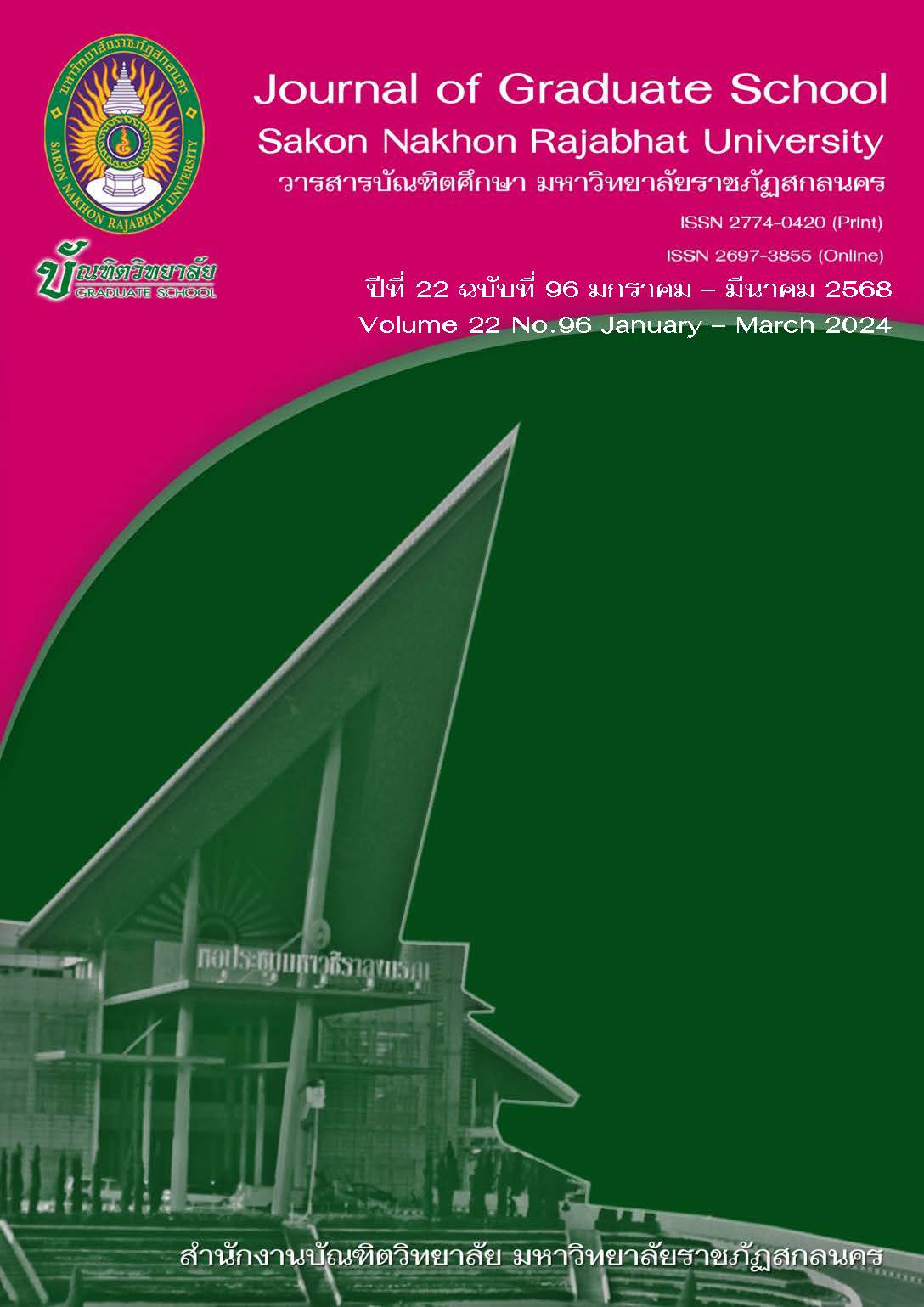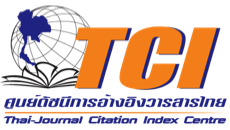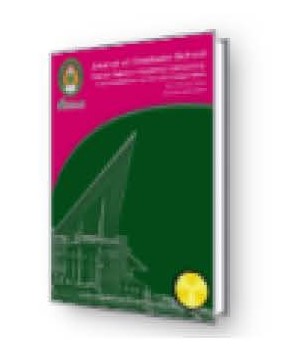THE SURVEY ON BEHAVIORS AND LEARNING PROBLEMS OF BUSINESS CHINESE MAJOR STUDENTS IN ONLINE COURSES AT KRIRK UNIVERSITY
Keywords:
Online Learning Media Behaviors, Problems, Teaching and Learning ManagementAbstract
The purposes of this research were 1) to survey the behaviors and learning problems of Business Chinese Major Students in online courses at Kirk University, and 2) to propose guidelines for improving the teaching and learning process. Data were collected from 35 undergraduate students majoring in Business Chinese, spanning the first to fourth year, and seven lecturers teaching online courses at Kirk University through a set of questionnaires and interview forms. The data were analyzed by percentage, average, and standard deviation.
The research results revealed that:
1. Most students used their mobile phones to study from their places or condominiums. The mobile application they most frequently used was VooV Meeting;
2. The students encountered challenges in studying online courses at an overall medium level ( = 2.64). Personal problems reached at the highest level of challenges (
= 2.91), followed by learning problems (
= 2.79), learning support problems (
= 2.68), and environmental problems (
= 2.19), respectively;
3. The lecturers employed both inductive and deductive methods. The researcher has also proposed solutions to address learning problems as follows: 1) Individual Level: Students are encouraged to consult with teachers or establish class agreements regarding learning schedules, and time management, and create suitable self–learning schedules; 2) Learning: Teachers should provide various channels, such as Line, WeChat, Facebook, or telephone number, to facilitate communication with students; 3) Environment: Teachers must prepare appropriate study environment–well–ventilated, quiet, and free from noises, to enhance learning effectiveness of learners; and 4) Learning Tool Support: Before classes begin, learners should find a suitable study location with a stable internet connection or a strong Internet network.
References
กฤษณา สิกขมาน. (2554). การศึกษาผลสัมฤทธิ์ทางการเรียนรายวิชาการสื่อสารภาษาอังกฤษธุรกิจโดยการใช้การสอนแบบ E–Learning. เข้าถึงได้จาก https://so06.tci–thaijo.org/index.php/mcjou/article/view/266886/179002. 18 มกราคม 2567.
จุฬารัตน์ บุษบงก์. (2565). สมรรถนะดิจิทัล: ทักษะเพื่อการเรียนรู้อย่างยั่งยืนตามเป้าหมายของการประชุมเอเปคด้านการศึกษา 2022. วารสารเทคโนโลยีและสื่อสารการศึกษา, 18(24), 70–85.
จักรกฤษณ์ โพดาพล. (2563). การจัดการเรียนรู้ออนไลน์: วีถีที่เป็นไปทางการศึกษา. เข้าถึงได้จาก https://slc.mbu.ac.th/wp–content/uploads/2020/06/pdf. 18 มกราคม 2567.
เด่น บุญมาวงค์ พนาวัน ถนนแก้ว และจีรนาถ ภูริเศวตกำจร. (2565). พฤติกรรมการเรียนออนไลน์และผลการเรียนรู้ของนักศึกษาวิทยาลัยทองสุข. วารสารสหวิทยาการพัฒนา, 1(1), 251–257.
นรินธน์ นนทมาลย์ และคณะ. (2564). การสำรวจปัญหาการจัดการเรียนการสอนออนไลน์ในหมวดวิชาศึกษาทั่วไปของนิสิต มหาวิทยาลัยพะเยา. วารสารเทคโนโลยีและสื่อสารการศึกษา, 16(20), 61–73.
ปรัชญนันท์ นิลสุข. (2565). การจัดการเรียนรู้ในยุคเทคโนโลยีดิจิทัล. ในเวทีการประชุมวิชาการระดับชาติ “ครุศาสตร์ศึกษา ครั้งที่ 4” นครสวรรค์: คณะครุศาสตร์ มหาวิทยาลัยราชภัฏนครสวรรค์.
พระมหาเมธี จนทวโส และคณะ. (2565). ปัญหาด้านการเรียนออนไลน์. วารสารวิชาการแสงอีสาน มหาวิทยาลัยมกุฎราชวิทยาลัย วิทยาเขตอีสาน, 19(1), 61–68.
วรรษมน เพียรเสมอ และคณะ. (2565). “การศึกษาความพึงพอใจของนักศึกษาจีนมหาวิทยาลัยราชภัฏนครปฐมต่อการจัดการเรียน การสอนรูปแบบออนไลน์ในสถานการณ์การระบาดของโรคติดเชื้อโควิด– 19” ในการประชุมระดับชาติครั้งที่ 14, วันที่ 7–8 กรกฎาคม 2565 ณ มหาวิทยาลัยราชภัฏนครปฐม, จังหวัดนครปฐม หน้า 2015–2026.
วัฒนพร จตุรานนท์ และคณะ. (2563). การศึกษาพฤติกรรมการเรียนออนไลน์และความพึงพอใจที่มีต่อการจัดการเรียนรู้ภาษาจีนผ่านระบบออนไลน์ของนิสิตหลักสูตรการศึกษาบัณฑิตสาขาภาษาจีน คณะศึกษาศาสตร์ มหาวิทยาลัยบูรพา ภาคการศึกษาฤดูร้อน ปีการศึกษา 2562 ตามมาตรการและการเฝ้าระวังการระบาด ของโรคไวรัสโคโรนา 2019. วารสารวิชาการภาษาและวัฒนธรรมจีน มหาวิทยาลัยหัวเฉียวเฉลิมพระเกียรติ, 7(2), 291–310.
สริตา เจือศรีกุล และคณะ. (2563). แนวทางการจัดการเรียนการสอนศิลปะปฏิบัติออนไลน์ในสถานการณ์ฉุกเฉิน: กรณีศึกษาสถานการณ์โควิด19. ครุศาสตร์สาร, 14(2), 99–114.
สุภาภรณ์ หนูเมือง และคณะ. (2565). พฤติกรรมการเรียนและปัจจัยความสำเร็จในการเรียนระบบออนไลน์บนแอปพลิเคชันไมโครซอฟต์ทีม ในช่วงสถานการณ์โควิด–19. วารสารสหการวิทยาการเพื่อการพัฒนา มหาวิทยาลัยราชภัฏอุตรดิตถ์, 12(1), 1–14.
Brandon, H. (1997). Multimedia and Training Newsletter. Retrieved from http: //www.brandon–hall.com/faq.html. January 13th, 2023.
Taylor. (2014). A Look at Web–based Instruction Today: An interview with Badrul Khan, Part 1. eLearn Magazine. A Publication of ACM. Retrieved from http://elearnmag.acm.org/archive.cfm?aid=2590180. January 13th, 2023.
Martins, J., Costa, C., Oliveira, T., Gonçalves, R., & Branco, F. (2018). How smartphone advertising influences consumers' purchase intention. Journal of Business Research, 5, 689–700.
Downloads
Published
How to Cite
Issue
Section
License
Copyright (c) 2025 Journal of Graduate School Sakon Nakhon Rajabhat University

This work is licensed under a Creative Commons Attribution-NonCommercial-NoDerivatives 4.0 International License.
บทความทุกบทความที่ตีพิมพ์ในวารสารบัณฑิตศึกษา มหาวิทยาลัยราชภัฏสกลนคร ถือว่าเป็นลิขสิทธิ์ของบัณฑิตวิทยาลัย มหาวิทยาลัยราชภัฏสกลนคร










